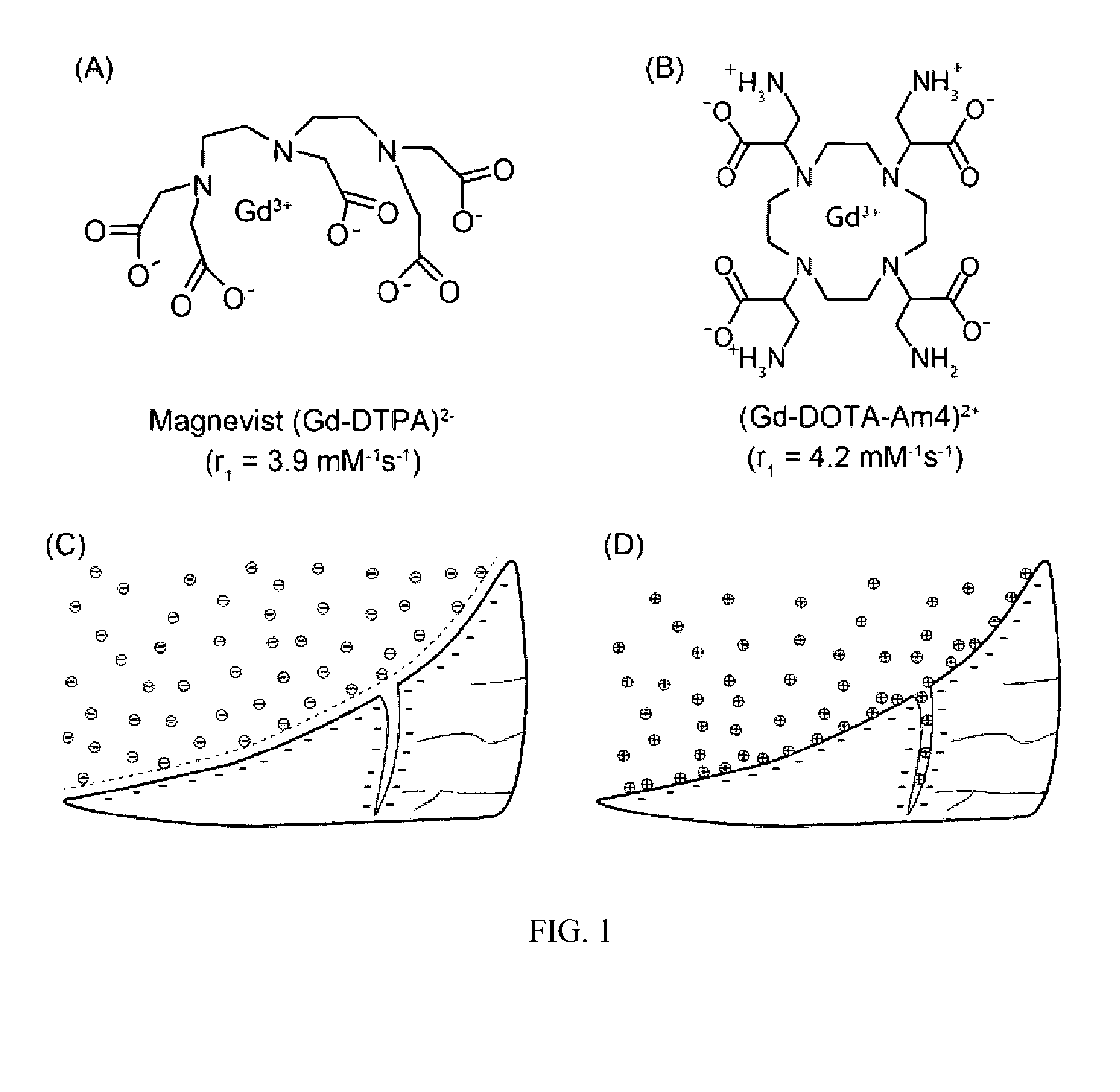Cationic contrast agents and methods of using the same
a contrast agent and cationic technology, applied in the field of contrast agents, can solve the problems of thinning cartilage, difficult to identify fine features, and difficulty in detecting joint pathologies,
- Summary
- Abstract
- Description
- Claims
- Application Information
AI Technical Summary
Benefits of technology
Problems solved by technology
Method used
Image
Examples
example 1
[0045]As described below, the efficacy of Complex A in highlighting soft tissue tears was evaluated in comparison to a clinically employed contrast agent (Magnevist®) using explants obtained from adult bovine menisci, a fibrocartilaginous tissue in the knee joint. Complex A appeared to improve the ability to detect soft tissue defects by providing increased signal intensity along the length of the tear. Magnevist® showed a strong signal near the liquid-meniscus interface, but less contrast was observed within the defect at greater depths compared to what was observed with Complex A.
[0046]Compound Ia was synthesized as shown below:
[0047]Compound2 was prepared by bromination of methyl acrylate using bromine in chloroform at room temperature, while compound 3 was prepared by slow addition of diethylamine into compound 2 in ether at 0° C. The methyl and ethyl protecting groups were efficiently removed with a methanol:NaOH (0.5 M) solvent cocktail (40:60) for 48 h. The solution was neutr...
example 2
[0079]Compound Ib (“DOTA-AmS4”) was synthesized as shown below:
[0080]Compound Ib was prepared as follows: Chlorosulfonyl isocyanate was reacted with tert-butanol and tert-butylamine in toluene to yield tert-butyl N-tert-butylsulfamoylcarbamate followed by removal of Cert-butylcarbamate using trifluoroacetic acid. The resulting N-tert-bytulsulfamide was reacted with brominated methylacrylate followed by a subsequent reaction with 1,4,7,10-tetraazacyclododecane (cyclen). The tert-butyl groups were removed via treatment with 2M hydrochloric acid in dioxane (2M-HCl-Dioxane) while methyl groups were removed by treatment with 1M NaOH to yield compound Ib.
[0081]Compound Ic (“DOTA-Ac4”) was synthesized as shown below:
[0082]Compound Ic was prepared as follows: L-serine was brominated using bromine and sodium nitrite, followed by protection of carboxylates using methanol with a catalytic amount of sulfuric acid. The alcohol was protected with tert-butyl group using magnesium sulfate and tert-...
PUM
 Login to View More
Login to View More Abstract
Description
Claims
Application Information
 Login to View More
Login to View More - R&D
- Intellectual Property
- Life Sciences
- Materials
- Tech Scout
- Unparalleled Data Quality
- Higher Quality Content
- 60% Fewer Hallucinations
Browse by: Latest US Patents, China's latest patents, Technical Efficacy Thesaurus, Application Domain, Technology Topic, Popular Technical Reports.
© 2025 PatSnap. All rights reserved.Legal|Privacy policy|Modern Slavery Act Transparency Statement|Sitemap|About US| Contact US: help@patsnap.com



